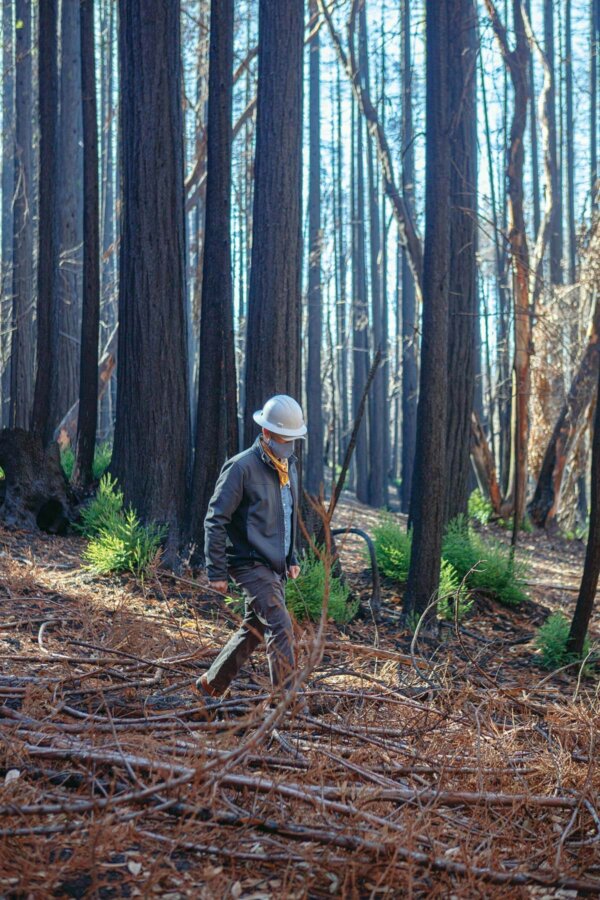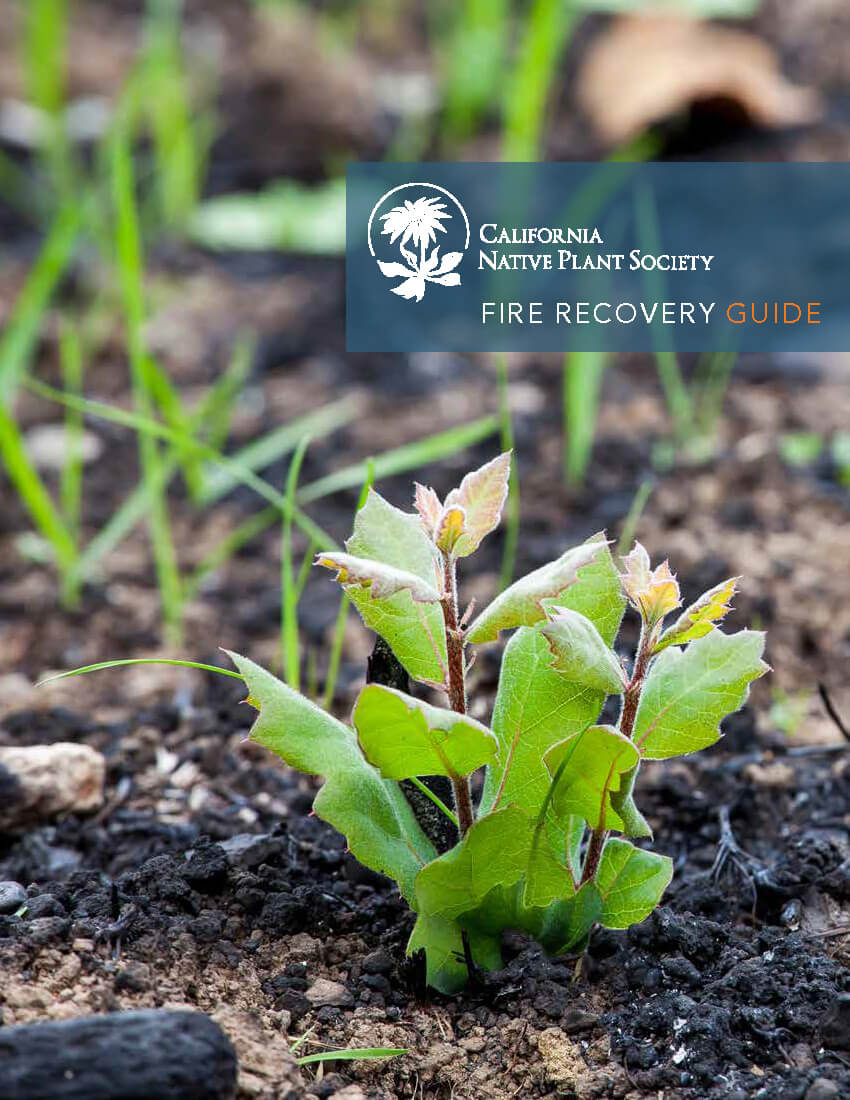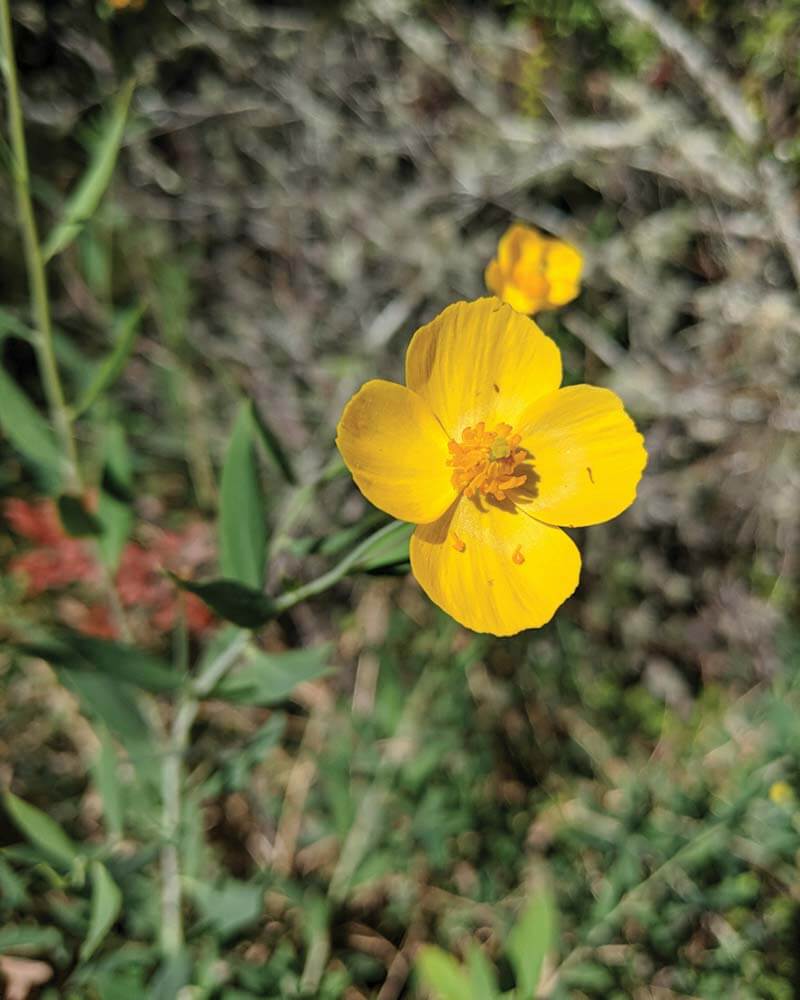The Natural Healing Power of Fire
We are proud to partner with California Native Plant Society and Pepperwood Preserve on this feature.
Fire Ecology, Redwoods, and What Follows

Fire enriches soils with nutrients for falling redwood seeds to thrive in and it can also unlock seed banks in the base of redwoods. Both strategies ensure new generations of redwoods can thrive, despite fire’s effects on mother trees or other plant species. What are the 10 signs of redwood forests’ recovery after fire?
In the weeks and seasons following a fire, new plant species can emerge in a habitat. The newly nutrient-rich soils of fire-burned habitats can bring forth long-dormant seeds as well. Factors such as increased sunlight and incineration of understory plants, including invasive species, can combine to create exceptional conditions for a brilliant show of flowering plants to emerge from the charred earth.

From the 2019 CNPS Fire Recovery Guide
Some plants have been called “fire followers” since they are only seen in abundance following fires. A classic fire follower, whispering bells (Emmenanthe penduliflora), remains in the soil seed bank for years and is only seen in profusion in the years after a fire. Bush mallows (Malacothamnus spp.) have long-lived seeds that can remain in the soil seed bank for more than 100 years! While you may see a few bush mallows along a road or trail, a large number of plants germinate following a fire. Bush mallows then flower and set seeds in abundance, only to be outcompeted by other trees and shrubs. The seeds of plants such as these remain dormant in the soil and may appear to be absent in an area for decades.
Get the CNPS Guide here.
Fire Followers

Some, like the Santa Cruz Mountains beardtongue (Penstemon rattanii var. kleei), are rooted deeply enough for the roots to survive the fire. The fire enriches the soil, removes species competing for resources, and opens up the forest to allow an abundance of sunlight and when the rains arrive, these lilies flourish.
Others, such as the rare Brewer’s calandrinia (Calandrinia breweri), spend most of their lives in soil seed banks waiting for fire to open up space, sunlight, and resources to bloom, only to hibernate again as the habitat reestablishes itself.
Some native species that need heat to germinate, such as the chaparral shrub chamise (Adenostoma fasciculatum) or the sticky monkeyflower (Mimulus aurantiacus) may be found in abundance this spring.
We also expect to see coast blueblossom (Ceanothus thyrsiflorus) near the redwoods, bush poppy (Dendromecon rigida) among the chaparral, and native clovers.
Stay tuned for our guide to what you might see, and where.

